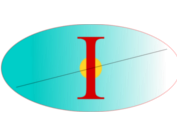Citation:
| li2019stochastic.pdf | 1.51 MB |

Abstract:
Over this past decade, we combined the idea of stochastic resolution of identity with a variety of electronic structure methods. In our stochastic Kohn-Sham density functional theory (DFT) method, the density is an average over multiple stochastic samples, with stochastic errors that decrease as the inverse square root of the number of sampling orbitals. Here, we develop a stochastic embedding density functional theory method (se-DFT) that selectively reduces the stochastic error (specifically on the forces) for a selected subsystem(s). The motivation, similar to that of other quantum embedding methods, is that for many systems of practical interest, the properties are often determined by only a small subsystem. In stochastic embedding DFT, two sets of orbitals are used: a deterministic one associated with the embedded subspace and the rest, which is described by a stochastic set. The method agrees exactly with deterministic calculations in the limit of a large number of stochastic samples. We apply se-DFT to study a p-nitroaniline molecule in water, where the statistical errors in the forces on the system (the p-nitroaniline molecule) are reduced by an order of magnitude compared with nonembedding stochastic DFT.



